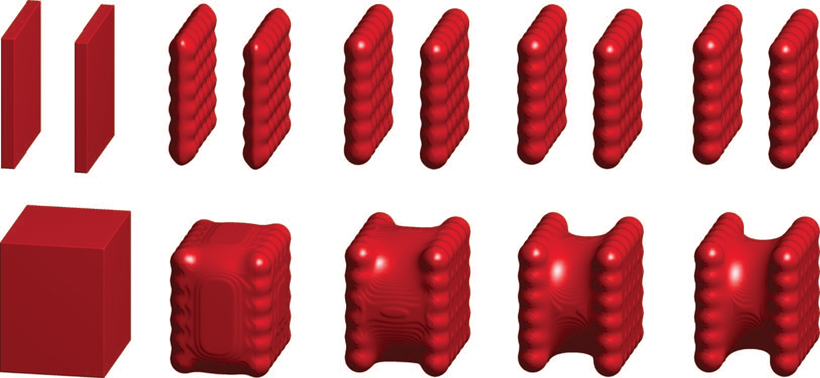New Computational Method Described in "The Journal of Chemical Physics" Allows Researchers to Predict how Biological Molecules Interact with Water
From the Journal: The Journal of Chemical Physics
WASHINGTON D.C. Nov. 19, 2013 — A team of biochemists and mathematicians have developed a sophisticated geometric model to predict how a biological molecule will interact with water molecules, computing the results up to 20 times faster than other existing approaches. This new approach may help researchers find new drugs to treat human diseases, said the team, who described their theoretical approach in The Journal of Chemical Physics, which is produced by AIP Publishing.
“Our research explores how water can change the shape of a molecule, how different molecules can get along well in water and, ultimately, how drug molecules can hit targets with the help of water,” says Bo Li, professor of mathematics and senior scientist, National Science Foundation Center for Theoretical Biological Physics, University of California, San Diego.

Biological molecules such as DNA and proteins are the building blocks of living systems, and each molecule consists of many atoms. “How these molecules self-organize is crucial to maintaining a healthy system, because a missing or deformed atom within a molecule can lead to disease,” explained Li.
The human body contains numerous biological molecules, many of which are surrounded by water, which can help change their shape and affect how they interact with other molecules in the body. Up to 60 percent of the human body is water, so it’s essential that this solvent be considered.
“Many biological molecules are hydrophobic (water repelling), just like a drop of oil in water, but when mixed they will eventually blend together,” said Li.
Being able to quickly predict the structure of biological molecules in water by using this new theoretical approach should help improve the ability of researchers to identify new targets and may reduce the need for expensive screening of millions of drug molecules in labs.
This work is part of a joint research program initiated in the lab of J. Andrew McCammon, Joseph E. Mayer Professor of Theoretical Chemistry, Distinguished Professor of Pharmacology, and Howard Hughes Medical Institute (HHMI), University of California, San Diego, and has been supported by grants from the National Science Foundation, National Institutes of Health, and HHMI.
###
Article Title
Phase-field approach to implicit solvation of biomolecules with Coulomb-field approximation
Authors
Yanxiang Zhao, Yuen-Yick Kwan, Jianwei Che, Bo Li, and J.A. McCammon
Author Affiliations
Howard Hughes Medical Institute (HHMI) and University of California, San Diego
